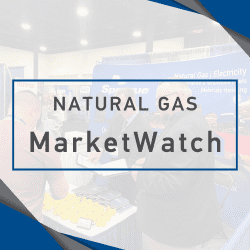Recap: The crude oil market extended its losses on Wednesday after it posted an outside trading session on Tuesday. The market sold off on weak demand after the EIA on Tuesday lowered its demand forecast for next year in its latest outlook and increasing U.S. oil inventories. This countered the risk of supply disruptions due to tension in the Middle East and Hurricane Milton moving across the Gulf of Mexico towards Florida’s coast. The market traded sideways in overnight trading, posting a high of $74.45 amid reports that China’s government would hold a government briefing on Saturday to introduce new stimulus to strengthen its fiscal policy. However, the market continued Tuesday’s trend lower and retraced 50% of its move from a low of $64.61 to a high of $78.46 as it posted a low of $71.53 ahead of the release of the EIA’s weekly petroleum stocks report. Late Tuesday, the API reported a larger than expected build of nearly 11 million barrels in the week ending October 4th. The market bounced off its low and retraced some of its earlier losses despite the EIA also reporting a large build of over 5.8 million barrels in crude stocks. The market also remained wary of a potential Israeli strike on Iran’s oil infrastructure following last weeks’ Iranian attack on Israel. The November WTI contract traded in a sideways trading range during the remainder of the session and settled down 33 cents at $73.24. The December Brent contract settled down 60 cents at $76.58. The product markets also ended the session lower, with the heating oil market settling down 2.03 cents at $2.2769 and the RB market settling down 1.7 cents at $2.0664.
Technical Analysis: The crude market is seen retracing some of its losses and remaining in a sideways trading range as it awaits news on Israel’s response to last week’s Iranian missile attack on Israel. The market is seen finding support at its low of $71.53, $70.52, $69.87 and $66.33. Meanwhile, resistance is seen at $73.80, $74.45, $74.66, $76.18 and $78.46.
Fundamental News: The EIA reported U.S. gasoline demand increased by more than 1.1 million bpd in the week ending October 4th, the sharpest weekly increase since February 2001. The data showed that U.S. gasoline product supplied reached 9.7 million barrels last week for the first time since December 2021.
U.S. President Joe Biden spoke by phone with Israeli Prime Minister Benjamin Netanyahu on Wednesday and the two leaders were expected to discuss Israeli plans for a retaliatory strike on Iran. The call on Wednesday morning was the leaders’ first known conversation since August and coincided with a sharp escalation of Israel’s conflict with both Iran and the Iran-backed Lebanese Hezbollah with no sign of an imminent ceasefire to end the conflict with Iran-backed Hamas in Gaza. Vice President Kamala Harris joined the call with Biden and Netanyahu. The White House and the Israeli Prime Minister’s office reported the phone call without giving any immediate details on what was discussed. Separately, in a video published on Israeli media, Israeli Defence Minister Yoav Gallant appeared to say that retaliation against Iran for its missile attack will be “lethal, precise and surprising.”
Chevron said that it has shut down their Tampa terminal as a precautionary measure in response to Hurricane Milton.
The North Dakota Pipeline Authority said oil production was estimated to be down between 70,000 and 100,000 bpd, as of Wednesday morning, due to the ongoing wildfires. North Dakota has been battling as many as six wildfires since October 6th, which have led to two fatalities so far. The director of the North Dakota Pipeline Authority, Justin Kringstad, said associated wellhead natural gas production was also estimated to be down 0.21 to 0.30 bcfd.
Early Market Call – as of 8:35 AM EDT
WTI – Nov $74.22, up 98 cents
RBOB – Nov $2.0927, up 2.63 cents
HO – Nov $2.3019, up 2.5 cents










